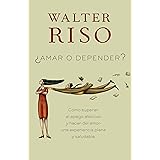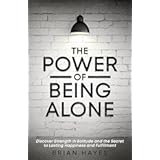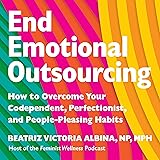The iconic romantic comedy, When Harry Met Sally, released in 1989, continues to captivate audiences, with studies indicating its sustained popularity as a “touchstone” film for viewers across generations. As explored in the accompanying video, this timeless classic offers far more than a simple love story; it provides a rich tapestry for in-depth character studies and a nuanced examination of relationship dynamics. This article delves into fresh insights concerning Harry Burns and Sally Albright, dissecting their individual complexities and the intricate evolution of their bond, offering a deeper appreciation for this beloved cinematic work.
The Enduring Resonance of When Harry Met Sally
For over three decades, When Harry Met Sally has been celebrated as a quintessential romantic comedy. Its narrative, masterfully crafted, navigates the complexities of platonic friendship transforming into romantic love. Furthermore, its autumnal setting has solidified its place as a perennial favorite during the fall season, inviting repeated viewings.
The film’s longevity is attributed not merely to its witty dialogue or memorable scenes, but also to its profound exploration of human connection. Consequently, a re-evaluation of its central characters, Harry and Sally, unveils layers of personality and motivation often overlooked in initial impressions, providing a richer viewing experience.
Unpacking Harry Burns: Beyond the Cynical Facade
Harry Burns, as portrayed by Billy Crystal, is frequently perceived as the cynical, commitment-phobic half of the duo. However, a closer inspection, as discussed in the video, reveals a more intricate character arc, marked by distinct phases in his approach to relationships.
Initially, during the fateful drive from Chicago to New York, Harry’s behavior towards Sally is observed. His attempts at flirtation, though somewhat clumsy, indicate an undeniable attraction, even if he cannot articulate its true source beyond her physical appeal. This initial encounter sets a foundational dynamic, illustrating his propensity for superficial engagement.
Following this period, Harry enters a phase of marriage to Helen, which, surprisingly, is not marred by infidelity within the film’s narrative. This commitment suggests a capacity for deeper attachment, despite his earlier expressed cynicism. Nevertheless, the dissolution of this marriage profoundly impacts Harry, triggering a subsequent regression into serial dating.
This post-divorce behavior is characterized by a desire for “revenge,” as Sally astutely observes. His casual sexual encounters are portrayed as a coping mechanism for emotional damage, rather than genuine connection. Consequently, Harry becomes a self-proclaimed commitment-phobe, struggling with vulnerability and the prospect of lasting intimacy.
It is important to note that Harry’s interactions with Sally often reveal his underlying authenticity. For instance, when he sincerely apologizes for past transgressions, his usual deflections are abandoned. This shift marks a critical turning point in their friendship, demonstrating a capacity for genuine introspection and emotional honesty, a trait often obscured by his initial guardedness.
Sally Albright’s Complexities: More Than Just “Pretty Privilege”
Sally Albright, brought to life by Meg Ryan, is frequently seen as the fastidious, slightly neurotic, yet endearing counterpart to Harry. Yet, the transcript points to deeper complexities within her character, particularly regarding what some term “pretty privilege.”
This concept suggests that Sally’s attractiveness might lead others to project desired qualities onto her, potentially overlooking her true personality. Her perceived cuteness could, in some instances, render her actual self irrelevant to those around her. This phenomenon might explain why certain individuals, such as Jess (Harry’s friend) and even a diner waitress, find Sally’s personality challenging, struggling to understand Harry’s enduring tolerance for her “bull crap.”
A notable visual cue to Sally’s internal world is the book she is seen holding in a bookstore: “Too Smart For Her Own Good.” This title subtly hints at a potential self-perception of intellectual superiority, which might ironically contribute to her struggles in long-term relationships. Her longest known relationship, with Joe, lasted approximately four years, which, while significant, ultimately did not endure.
Furthermore, moments of what might be termed narcissistic tendencies are observable in Sally. For example, after an embarrassing incident, her immediate urge to share her story, even when Harry feigns disinterest, suggests a strong need for her experiences to be acknowledged and validated. While she exhibits moments of empathy, her focus largely remains on her own narrative, contrasting with characters genuinely invested in community service, as the video notes.
Her famous finicky eating habits, though often played for comedic effect, underscore a broader fastidiousness that can be both charming and frustrating. These traits, while not as overtly dramatic as those of characters like Bridget Jones, reveal a subtly flawed individual, whose quirks ultimately require a partner who not only tolerates but genuinely appreciates them.
The Evolution of a Relationship: From Skepticism to Intimacy
The core of When Harry Met Sally lies in the gradual transformation of Harry and Sally’s relationship. Their journey commences with mutual skepticism and a contentious debate about whether men and women can truly be platonic friends. Over the years, their interactions, often marked by witty banter and intellectual sparring, slowly forge a deep, if initially unacknowledged, bond.
A pivotal moment occurs when Harry sincerely apologizes to Sally for past insensitive remarks, specifically asking about “the statute of limitations on apologies.” Her humorous reply, “Ten years!” and subsequent “free pass,” signifies a shift towards genuine friendship. This interaction demonstrates a willingness from both parties to move past superficial exchanges and engage on a more authentic emotional level.
Throughout their years of friendship, Harry consistently exhibits patience as Sally navigates her own emotional landscape and relationship failures. His unwavering presence, despite her various “bull crap” moments, underscores his unique acceptance of her whole self. This deep understanding is ultimately what sets their bond apart from Sally’s previous relationships.
The gradual realization of their romantic feelings is presented with authenticity, culminating in Harry’s heartfelt declaration of love on New Year’s Eve. This confession is not merely an emotional outburst but a culmination of years of shared experiences, vulnerabilities, and an unparalleled acceptance of each other’s flaws. Consequently, their eventual union feels earned, representing a triumph of genuine connection over individual anxieties and societal expectations.
When Harry Met Sally in a Broader Cinematic Context
When Harry Met Sally holds a distinctive place within the romantic comedy genre. While it shares thematic elements with other films, its unique narrative structure and character-driven focus set it apart. Comparisons are often drawn to Woody Allen’s Annie Hall, particularly in its witty dialogue and explorations of relationship neuroses, even borrowing Sally’s “Annie Hall kind of looks” as a subtle nod.
However, the film distinguishes itself by being less cynical than Annie Hall, particularly in its celebrated happy ending. It is a known fact, as mentioned in the video, that the original script concluded tragically. The decision to revise the ending to one of romantic fulfillment significantly shaped the film’s legacy, making it the beloved touchstone it is today rather than a “weird movie” with a somber resolution.
In contrast to the love triangle dynamics often found in other rom-coms, such as those starring Hugh Grant, When Harry Met Sally predominantly focuses on the evolving two-person dynamic between its leads. This concentrated focus allows for a deeper exploration of Harry and Sally’s individual psychologies and their interaction. Unlike the diary format of Bridget Jones’s Diary, which explicitly details a flawed protagonist’s internal struggles, When Harry Met Sally subtly reveals its characters’ imperfections through their dialogue and actions, inviting viewers to interpret their complexities.
The film’s exploration of characters like Harry, with his commitment phobia, and Sally, with her perceived narcissism, resonates with modern discussions surrounding relationship archetypes and psychological profiling. These discussions highlight how the film, even decades later, provides a relevant lens through which to examine interpersonal dynamics, fostering continuous analytical engagement among its audience.











